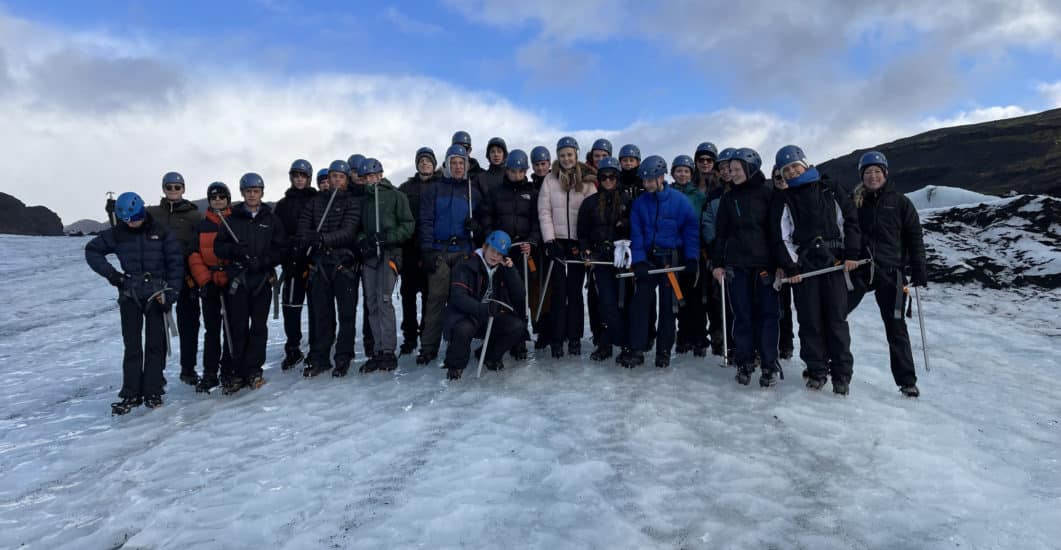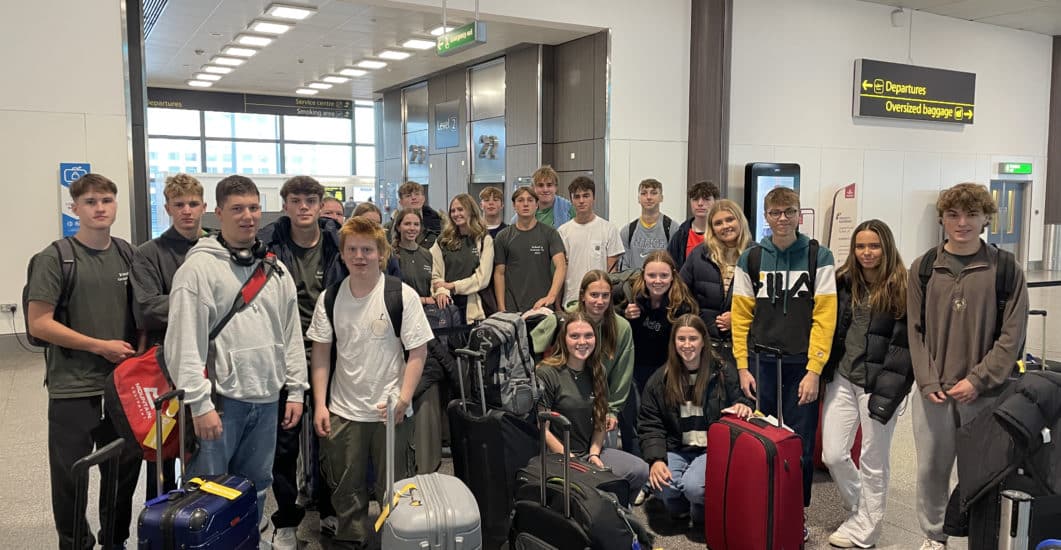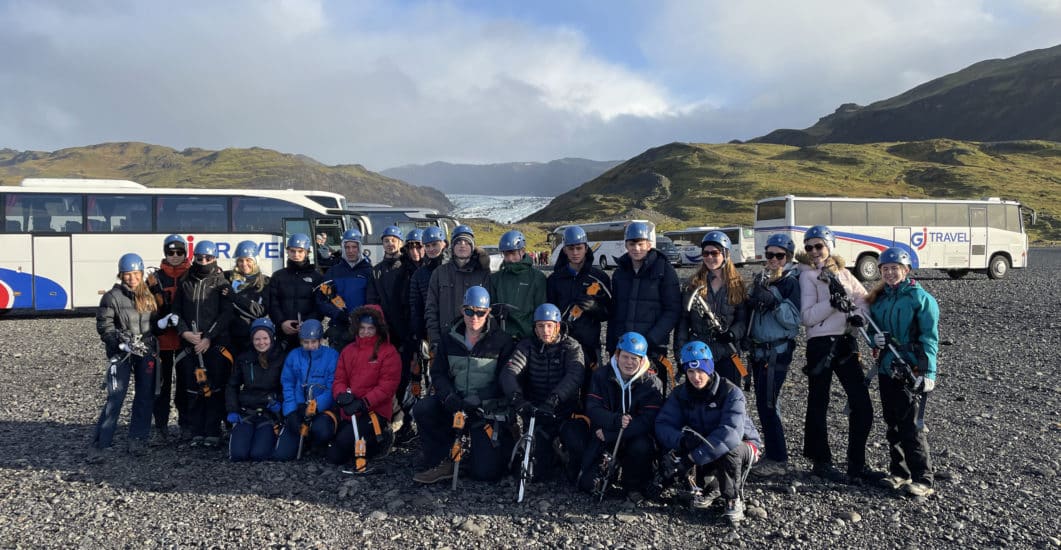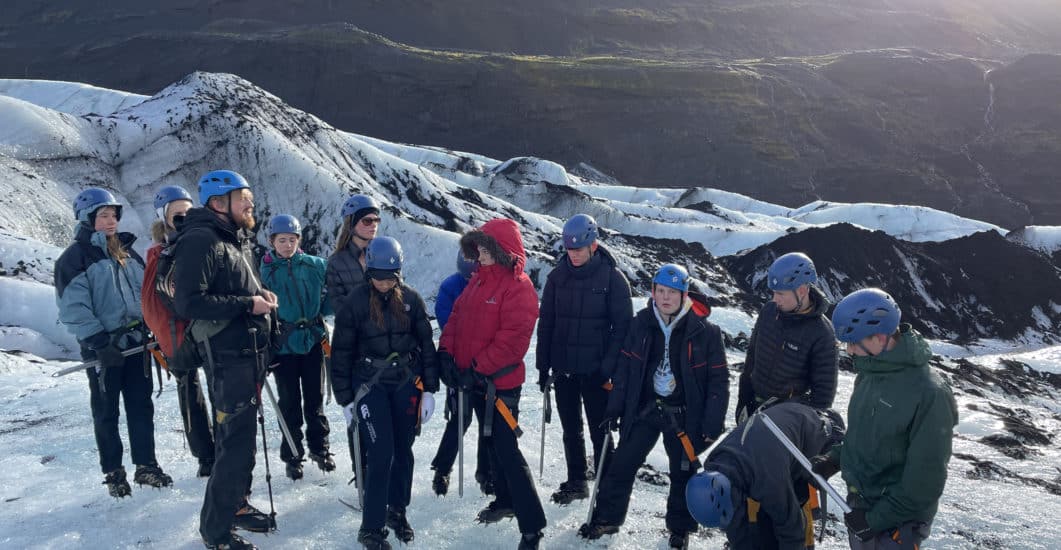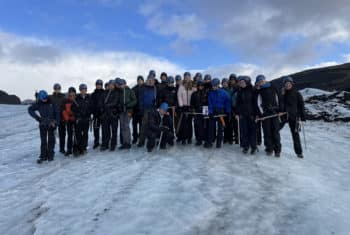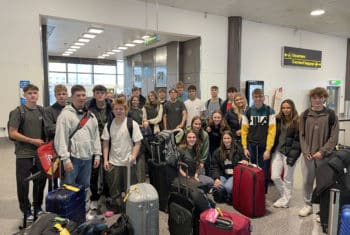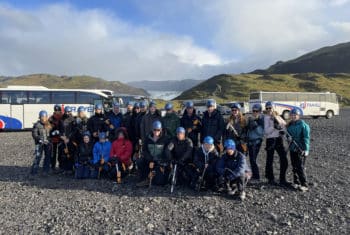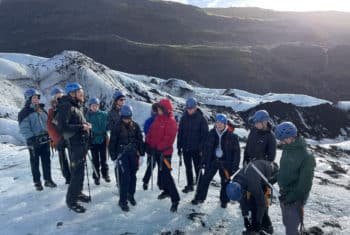After frustrating news of their flight being cancelled on the morning they were supposed to leave, the Lower Sixth geographers luckily managed to get a flight on Friday evening, even if it was delayed! Nevertheless, they finally made it to Iceland and got to their accommodation at around 4.30am on Saturday. Despite all students and staff being very tired, the bonus of arriving at that time in the early hours meant that they were welcomed by a beautiful display of the Northern Lights.
After some sleep, the students (and staff!) were ready and raring to go on Saturday morning, starting with a hike on the Sólheimajökull glacier and everyone thoroughly enjoyed seeing their geography glacial studies come to life. All hikers had to wear crampons on their feet to help them walk on the ice and use an ice axe which aided them with the climb. Due to its length the students did not climb the entire glacier, but they stopped at a point to take in the views and the lovely tour guides explained many different facts about the glacier formation and the impact that climate change is having on glacial retreat.
The next destination was Reynisfjara Beach near the village of Vik; a black sand beach formed by previous volcanic eruptions. The waves on this beach are powerful and sudden, with a very strong current, so students all had to stay a fair distance from the water but said that being on black sand was a unique experience.
After this the students headed to two amazing waterfalls, the first one was Skógafoss waterfall which is one of the biggest waterfalls in Iceland with a drop of 60 metres and a width of 25 metres. The other waterfall was Seljalandsfoss, which was particularly spectacular as it had a massive plunge pool, and the students were able to walk behind it and see it fall in front of their eyes!
Day two was equally as jam-packed and due to losing a day due to the cancelled flight, the group tried to pack in as much as they could for their now limited time in Iceland. The morning started with breakfast at the hotel followed by a visit to the LAVA Volcano and Earthquake Centre which explores the volcanic forces at work in the country. Dedicated to Iceland’s range of volcanoes, and in particular the eruption of Eyjafjallajökull in 2010 (another of their A-level case studies), it was interesting and informative. The centre tracks live earthquake eruptions as well as has a great viewing platform for many of Iceland’s volcanoes.
After a thrilling morning, they then made their way to the Secret Lagoon; a natural hot spring and bathing pool. The students enjoyed a magical experience and made the most of this chance to relax.
The rest of the day was spent exploring the Golden Circle is home to some spectacular geographical landforms. Including a geyser.
Next up was Þingvellir; a national park where Iceland’s first parliament was formed in 930AD. It’s also where the Eurasian and North American tectonic plates are pulling apart and the students were able to see the pahoehoe lava formations.
Last on the agenda was a visit to the Lava Tunnel – one of the largest and longest caves in Iceland – where the geographers were able to see the inner workings of a lava tube. The highlight of this experience was the students turning their torches off and being immersed in complete darkness!
And to top off the trip, the students were lucky enough to see the Northern Lights for a second time whilst walking to dinner on the last evening, a perfect way to end the trip!
